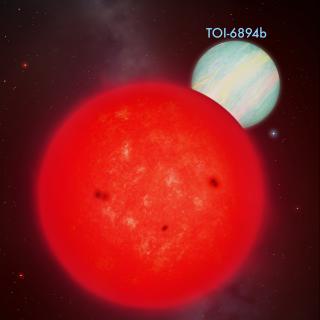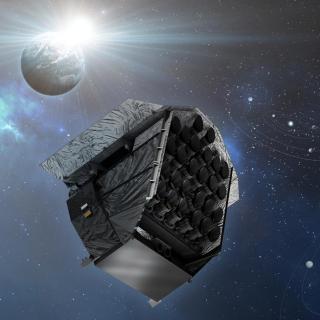The combination of a white dwarf mass close to the Chandrasekhar limit (1.4 solar masses) and a fast hydrogen accretion rate (10-7 solar masses per year) from a companion star leads to frequent thermonuclear runaways in the accumulated envelope of gas on the white dwarf. These are known as nova eruptions and have recurrence times of years to decades. In this work we report that the recurrent nova with the shortest recurrence timescale known (approximately once a year), M31N 2008-12a in the Andromeda galaxy, is surrounded by a giant shell with a projected size of about 134 by 90 pc that is made of swept-up interstellar medium material. We conclude that this unprecedented size for a classical or recurrent nova (usually not larger than 1 pc) is the consequence of thousands of successive nova eruptions in the system, showing that the eruptive behaviour of M31N 2008-12a may have started millions of years ago.
Hα+[N II] imaging of the super-remnant in M31N 2008-12a taken with the Liverpool Telescope (left), and the Hubble Space Telescope and WFC3 (right).
Advertised on
Authors
R. Hounsell
M. Henze
Pablo
Rodríguez Gil
A. W. Shafter
M. M. Shara
N. M. H. Vaytet
R. Galera-Rosillo
et al.
References
![A giant interstellar bubble being grown in the Andromeda galaxy Hα+[N II] imaging of the super-remnant in M31N 2008-12a taken with the Liverpool Telescope (left), and the Hubble Space Telescope and WFC3 (right).](/sites/default/files/styles/crop_rectangle_21x9_to_1280/public/images/news/Galeria_IAC_figura_Pablo_Rdrguez.jpg?h=b5311075&itok=ayh1F52x)


